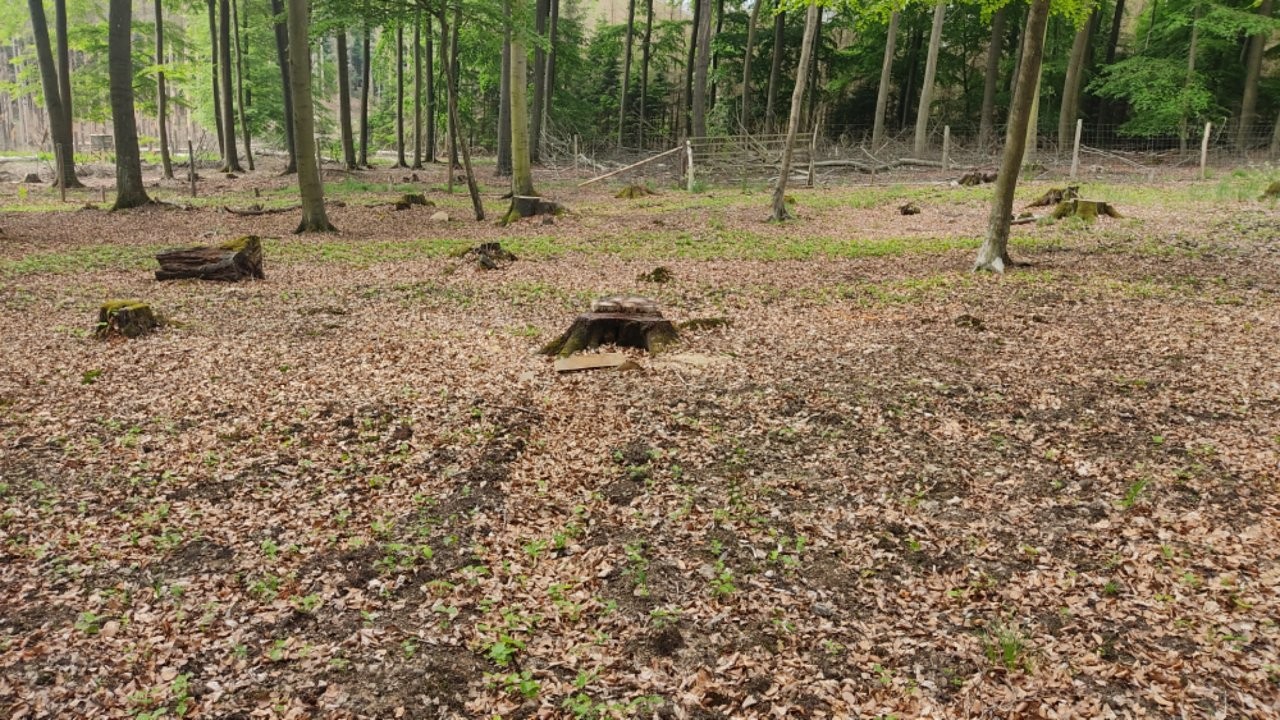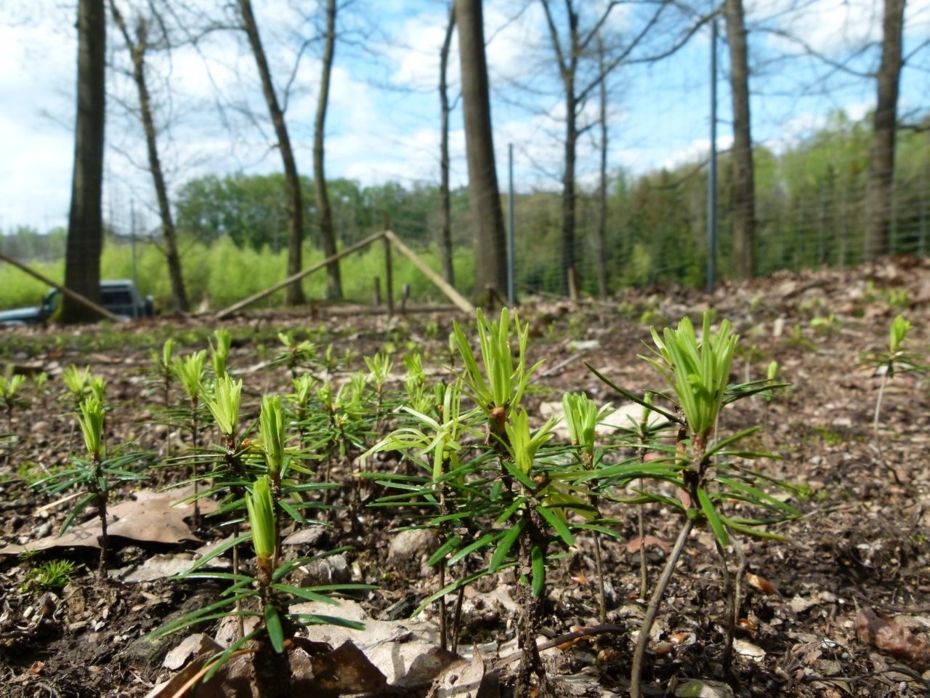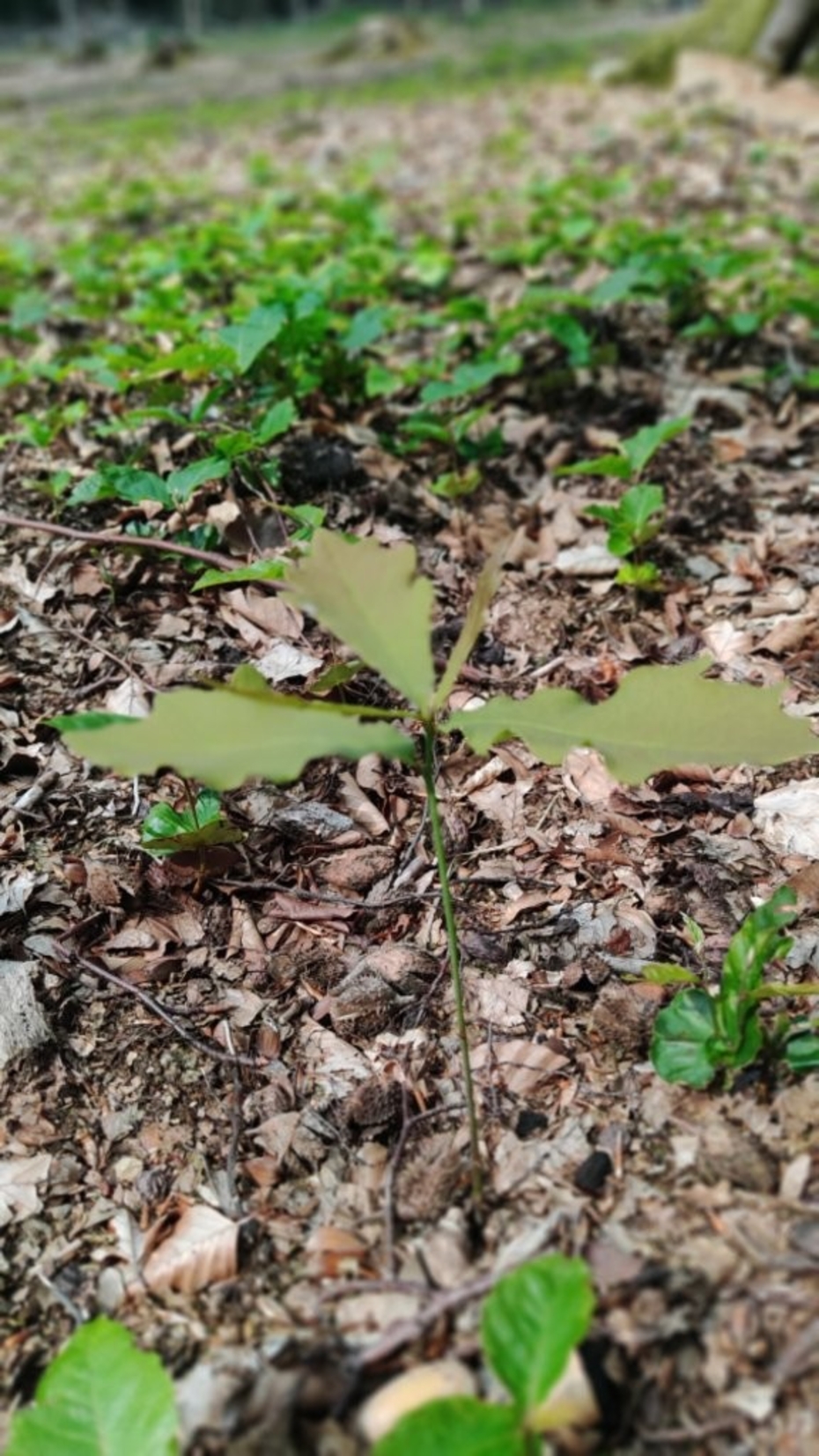Sourcing of planting material through the establishment of a temporary Saatkamp (Fliegender Saatkamp)

Temporary Saatkamp with beech and oak. Image: Carsten Arndt, Wald und Holz NRW
A common challenge in resforestation efforts is the availability of sufficient planting material, both in quantity and quality. A temporary Saatkamp can support restoration efforts by generating a supply of locally adapted seedlings. Benefits include reduced costs compared to externally sourced seedlings, and better adaptation of seedlings to local site conditions. Additionally, using locally grown seedlings facilitates more efficient logistical planning.
Context:
The establishment of small tree nurseries or forest gardens (so-called Saatkämpe – the plural of Saatkamp) within forest stands is not a new practice in Germany. Many forestry operations used this method of seedling production, either as permanent or temporary facilities. Koch (2017) notes that as early as the 17th century, the forest regulations of the territorial authorities of Hesse and Brunswick mandated the establishment of Saatkämpe for oak. The practice continued at least until the early 20th century, before private nurseries increasingly took over the production of planting material for forestry purposes. However, the practice is likely continued today.
Permanent Saatkämpe are comparable to nursery beds of commercial tree nurseries. A selected section of land in the forestry district is prepared, fenced, planted with collected or purchased seed, and subsequently cared for. Temporary Saatkämpe (Fliegende Saatkämpe) are less labor-intensive, as the maintenance of the Saatkamp and seedling management are generally not required. A temporary Saatkamp is established in an existing forest stand with suitable mother trees during a mast year and used for seed collection for a period of about 2-4 years. After this period the remaining plants grow into a new forest stand.
Source
Koch, M. (2017). Relikte neuzeitlicher Waldwirtschaft auf dem Digitalen Geländemodell im Umfeld Höxters. Archäologie in Westfalen-Lippe 2016, pp. 254-257. https://doi.org/10.11588/aiw.2017.0.57743
Problem Description:
A common challenge for restoration initiatives is securing sufficient suitable planting material, both in terms of quantity and, at times, quality. This is due to varying factors including a high demand for certain tree species and irregular mast seasons. Furthermore, climate change is altering the planting season by extending the growing season, which in turn shortens the optimal planting window, thereby complicating the planning and execution of planting activities.
Implementation Steps:
Establishment of a temporary Saatkamp
1. Selection of forest stand: Choose site with suitable mother trees of a desired tree species, ideally near an existing road network to ease the establishment and use.
2. Waiting for mast fall: Implementation occurs in a mast year, when mother trees naturally shed their seeds, maximnizing seed availability.
3. Canopy opening through selective tree removal: After mast fall, selectively remove trees from the site to improve light conditions for seedling growth. Avoid large gaps to prevent overly rapid seedling growth and growth of competing vegetation. Dragging the crown of felled trees through the soil during their removal helps retain even more seeds.
4. Seed addition and soil scarification: Add seeds from other genetic sources to ensure genetic diversity (30 to 40 mother trees). Scarify soil to improve germination, seedling establishment, and ease seedling collection with minimal root damage.
5. Fencing: Fence the Saatkamp to protect seedlings from browsing.
Seedling collection should occur when seedlings reach the desired size. The smaller the seedlings, the easier it is to collect them without damaging roots.
Ideal weather conditions for seedling collection and planting are cool conditions, preferably with a light drizzle.
Temporary Saatkämpe can provide seedlings for 2-4 years, depending on the species and growth rate of seedlings. There is no fixed size for the establishment of a Saatkamp.
Knowledge Types:
The practice is heavily based on local practical knowledge.
Replicability:
YES, the practice has been tested and replicated in multiple contexts and scales and therefore, can be easily transferred and/or adapted to other initiatives with similar goalsThe practice is not systematically monitored. However, this method of seedling production has been utilized in Germany for several hundred years. Thus, it can be assumed that it has been replicated many times in various contexts.
Key Success Factors:
Increased flexibility in planting operations: Since seedlings are produced near the restoration site, they can be harvested as needed reducing handling stress and losses as well as the dependency on fixed delivery schedules tied to external suppliers. The ability to adjust planting to real-time weather conditions additionally improves operational efficiency and planting success.
Reduced dependency on private nurseries: Temporary Saatkämpe provide an independent, locally managed source of planting material, reducing reliance on commercial nurseries, which may lack sufficient stock of desired species and provenances. This autonomy minimizes restoration delays caused by supply shortages. Additionally, planting material from Saatkämpen is usually cheaper than externally sourced material.
Improved adaptation of planting material to local site conditions: Because seedlings are grown from seeds collected in-situ or nearby, they are usually better adapted to local environmental conditions, including soil, climate and biotic interactions than externally sourced planting material. This can improve survival rates, growth performance and resilience. Using locally sourced material can also support the conservation of regionally adapted genetic resources and enhance the ecological integrity of restoration efforts.
Common Constraints:
Competing land-use: Saatkämpe require dedicated areas within productive forest stands, which may reduce land available for timber production or other forestry uses. However, temporary Saatkämpe have the advantage that they are (re)moved after a certain time period (usually 2-4 years).
Lessons Learnt:
- Local foresters suggested that planting material from locally sourced temporary Saatkämpe showed less browsing damage.
- Different tree species can be grown and sourced together in a temporary Saatkamp. For instance, a Saatkamp in a beech stand can be supplemented with seeds from white fir. Additionally, natural vegetation of other tree species often develops in a Saatkamp, which can also be used for reforestation purposes.
Positive Impacts:
- Improved tree species regeneration
Additional positive impacts:
- Conservation of local genetic resources
- Reduced restoration costs
- Increased operational autonomy
- Low-tech, inclusive approach to sourcing of planting material
Feedback on the benefits and positive impacts of the practice were mainly obtained from local foresters who engage in the practice to source planting material. They emphasized the reduced reliance on external seed supply and improved operational efficiency of reforestation efforts, particularly in seedling availability and planting timing as main benefits of this practice.
Media
- Active Restoration
- Economic & Financial
- Planning & Upscaling
- Landowners & Practitioners
- Planners & Implementers
- Afforestation, reforestation
- Atlantic
- Continental
- Germany
- Unknown



